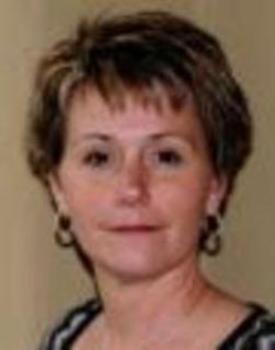Evidence-based practice (EBP) involves the combination of theory and data collection to determine clinical efficacy (Justice & Fey, 2004). EBP provides accountability for speech-language pathologists' clinical practice. It is driven by measurable, data based outcome information. EBP enables the speech-language pathologist (SLP) to compare the relative efficiency and accuracy of clinical results to the mode of therapeutic intervention and documented expected outcome data for that particular clinical approach (Justice & Fey, 2004). The popularity and utility of EBP has helped to push literacy to the forefront of professional interest as a result of the No Child Left Behind Act and the report of the National Reading Panel (NRP).
In this article, we will explore three key issues of awareness for SLPs in relation to the NRP. These three issues include: the history of the NRP, the NRP and controversy, and finally how SLPs can work more effectively in the area of literacy instruction.
Historical Perspective of the NRP
An understanding of the historical perspective leading to the formation of the NRP is needed to better understand the NRP report. Snow, Burns and Griffin(1998) were the editors of the report from the National Reading Council entitled " Preventing Reading Difficulties in Young Children". This report analyzed the state of early reading education at that time. The purpose was to examine classroom practices and to come to some common ground for reading instruction. The editors stated that their focus was on the prevention of reading difficulties, and not on "fixing" reading instruction and its outcomes.
Many people were dismayed at the state of reading education as reported in the National Reading Council's report, which was obtained by political and educational leaders prior to the 1998 printing release. Congressional leaders and educators were asking: "How do we 'fix' the problem?" and "What is the most effective reading instruction program?" Thus, prior to the publication of Preventing Reading Difficulties in Young Children (1998), in 1997, Congress directed the Secretary of Education and the director of the National Institute of Child Health and Human Development (NICHD) to convene a national panel of experts and consumers to find a solution to improving the state of reading instruction. The purpose of this panel was to assess the research in the area of effective practices in teaching children to read (National Institute of Child Health and Human Development, 2000). In addition, the panel was charged to present the findings and to assess if the research could be implemented into school classrooms. The chairman of the Panel was a physicist and chancellor of the University of Maryland. Eight panel members were professors in the area of reading via education or psychology. The remaining five panel members were a neuroscientist, a Vice Chancellor for Academic Affairs and Provost of the University of Massachusetts-Amherst, a CPA, a classroom teacher, and a school principal. No SLPs were panel members.
Congress requested the NRP report by November 1998. The panel compiled over 100,000 reading research studies to analyze requiring the panel to need additional time to complete their report. Congress allowed an extension to February 1999.
The NRP disseminated their findings in two written forms. The actual report is entitled, National Reading Panel Report of the Subgroups (National Institute of Child Health and Human Development, 2000). This report is over 450 pages; whereas, the Summary of the Report of the Subgroups is 33 pages (National Institute of Child Health and Human Development, 2000). The NRP generated the Summary report as a succinct resource for the larger volume of the Report of the Subgroups (National Reading Panel, 2001). One important fact about these two documents is they were written by different panel members (see Garan, 2003).
Speech-Language Pathologists and the National Reading Panel Report: The Top Three Things You Should Know
August 14, 2006
Related Courses
1
https://www.speechpathology.com/slp-ceus/course/dyslexia-and-developmental-language-disorder-11016
Dyslexia and Developmental Language Disorder: School-Based Screenings, Assessments, Interventions, and Implementation Science
Developmental language disorder (DLD) – a neurodiversity that occurs in 10% of the population and that makes learning vocabulary and grammar difficult - is the most commonly co-occurring learning disability associated with dyslexia, a word reading difficulty. DLD and dyslexia are described in this course with a focus on how they are the same and different. Actionable, practice solutions for improving educational outcomes for those with DLD and dyslexia through response to intervention and implementation science are discussed.
auditory, textual, visual
129
USD
Subscription
Unlimited COURSE Access for $129/year
OnlineOnly
SpeechPathology.com
www.speechpathology.com
Dyslexia and Developmental Language Disorder: School-Based Screenings, Assessments, Interventions, and Implementation Science
Developmental language disorder (DLD) – a neurodiversity that occurs in 10% of the population and that makes learning vocabulary and grammar difficult - is the most commonly co-occurring learning disability associated with dyslexia, a word reading difficulty. DLD and dyslexia are described in this course with a focus on how they are the same and different. Actionable, practice solutions for improving educational outcomes for those with DLD and dyslexia through response to intervention and implementation science are discussed.
11016
Online
PT60M
Dyslexia and Developmental Language Disorder: School-Based Screenings, Assessments, Interventions, and Implementation Science
Presented by Tiffany Hogan, PhD, CCC-SLP, FASHA
Course: #11016Level: Intermediate1 Hour
ASHA/0.1 Intermediate, Professional; Calif SLPAB/1.0; IACET/0.1; Kansas LTS-S1370/1.0; SAC/1.0
Developmental language disorder (DLD) – a neurodiversity that occurs in 10% of the population and that makes learning vocabulary and grammar difficult - is the most commonly co-occurring learning disability associated with dyslexia, a word reading difficulty. DLD and dyslexia are described in this course with a focus on how they are the same and different. Actionable, practice solutions for improving educational outcomes for those with DLD and dyslexia through response to intervention and implementation science are discussed.
2
https://www.speechpathology.com/slp-ceus/course/reading-comprehension-and-slp-foundational-10763
Reading Comprehension and the SLP: Foundational Understanding
This is Part 1 of a two-part series. This course provides SLPs with foundational knowledge needed to directly address and collaboratively support reading comprehension across all grade levels. Models of language and reading comprehension, comprehension processes vs. products, instruction in comprehension skills vs. strategies, factors in reading comprehension difficulties, and connections to general education are discussed.
auditory
129
USD
Subscription
Unlimited COURSE Access for $129/year
OnlineOnly
SpeechPathology.com
www.speechpathology.com
Reading Comprehension and the SLP: Foundational Understanding
This is Part 1 of a two-part series. This course provides SLPs with foundational knowledge needed to directly address and collaboratively support reading comprehension across all grade levels. Models of language and reading comprehension, comprehension processes vs. products, instruction in comprehension skills vs. strategies, factors in reading comprehension difficulties, and connections to general education are discussed.
10763
Online
PT60M
Reading Comprehension and the SLP: Foundational Understanding
Presented by Angie Neal, MS, CCC-SLP
Course: #10763Level: Intermediate1 Hour
AG Bell - LSLS/1.0 Domain 3, Domain 8, Domain 9; ASHA/0.1 Intermediate, Professional; Calif SLPAB/1.0; IACET/0.1; Kansas LTS-S1370/1.0; SAC/1.0
This is Part 1 of a two-part series. This course provides SLPs with foundational knowledge needed to directly address and collaboratively support reading comprehension across all grade levels. Models of language and reading comprehension, comprehension processes vs. products, instruction in comprehension skills vs. strategies, factors in reading comprehension difficulties, and connections to general education are discussed.
3
https://www.speechpathology.com/slp-ceus/course/reading-comprehension-and-slp-contributions-10764
Reading Comprehension and the SLP: Contributions of Language
This is Part 2 of a two-part series. The connections between reading comprehension and areas of language such as vocabulary, morphosyntax and social communication are described in this course. Implications for intervention/instruction and collaboration with educators are also discussed.
auditory, textual, visual
129
USD
Subscription
Unlimited COURSE Access for $129/year
OnlineOnly
SpeechPathology.com
www.speechpathology.com
Reading Comprehension and the SLP: Contributions of Language
This is Part 2 of a two-part series. The connections between reading comprehension and areas of language such as vocabulary, morphosyntax and social communication are described in this course. Implications for intervention/instruction and collaboration with educators are also discussed.
10764
Online
PT60M
Reading Comprehension and the SLP: Contributions of Language
Presented by Angie Neal, MS, CCC-SLP
Course: #10764Level: Intermediate1 Hour
AG Bell - LSLS/1.0 Domain 3, Domain 8, Domain 9; ASHA/0.1 Intermediate, Professional; Calif SLPAB/1.0; IACET/0.1; Kansas LTS-S1370/1.0; SAC/1.0
This is Part 2 of a two-part series. The connections between reading comprehension and areas of language such as vocabulary, morphosyntax and social communication are described in this course. Implications for intervention/instruction and collaboration with educators are also discussed.
4
https://www.speechpathology.com/slp-ceus/course/orthographic-phonology-a-deeper-dive-11024
Orthographic Phonology: A Deeper Dive
This course is designed for those who already have a basic understanding of the linguistic basis of spelling. Participants will transcribe phonemes and phones using the International Phonetic Alphabet (IPA), build awareness that syllable division in written form may obscure the structure and meaning of a word, classify the types of bases, and describe what letters are doing in words when they aren’t representing a sound.
auditory, textual, visual
129
USD
Subscription
Unlimited COURSE Access for $129/year
OnlineOnly
SpeechPathology.com
www.speechpathology.com
Orthographic Phonology: A Deeper Dive
This course is designed for those who already have a basic understanding of the linguistic basis of spelling. Participants will transcribe phonemes and phones using the International Phonetic Alphabet (IPA), build awareness that syllable division in written form may obscure the structure and meaning of a word, classify the types of bases, and describe what letters are doing in words when they aren’t representing a sound.
11024
Online
PT120M
Orthographic Phonology: A Deeper Dive
Presented by Katie E. Squires, PhD, CCC-SLP, BCS-CL, Lisa Barnett, B.Ed
Course: #11024Level: Intermediate2 Hours
ASHA/0.2 Intermediate, Professional; Calif SLPAB/2.0; IACET/0.2; Kansas LTS-S1370/2.0; SAC/2.0
This course is designed for those who already have a basic understanding of the linguistic basis of spelling. Participants will transcribe phonemes and phones using the International Phonetic Alphabet (IPA), build awareness that syllable division in written form may obscure the structure and meaning of a word, classify the types of bases, and describe what letters are doing in words when they aren’t representing a sound.
5
https://www.speechpathology.com/slp-ceus/course/integrating-word-journals-in-secondary-11284
Integrating Word Journals in Secondary Education to Support Morphological Knowledge, Vocabulary Development, and Spelling
This course explores how word journals can be used to enhance vocabulary development, morphological understanding, decoding skills, and spelling proficiency among secondary school students. It will provide practical strategies and activities for implementing word journals effectively, with an emphasis on integrating them into a variety of content areas across the curriculum.
auditory, textual, visual
129
USD
Subscription
Unlimited COURSE Access for $129/year
OnlineOnly
SpeechPathology.com
www.speechpathology.com
Integrating Word Journals in Secondary Education to Support Morphological Knowledge, Vocabulary Development, and Spelling
This course explores how word journals can be used to enhance vocabulary development, morphological understanding, decoding skills, and spelling proficiency among secondary school students. It will provide practical strategies and activities for implementing word journals effectively, with an emphasis on integrating them into a variety of content areas across the curriculum.
11284
Online
PT60M
Integrating Word Journals in Secondary Education to Support Morphological Knowledge, Vocabulary Development, and Spelling
Presented by Katie E. Squires, PhD, CCC-SLP, BCS-CL, Ginger Collins, PhD, CCC-SLP
Course: #11284Level: Intermediate1 Hour
ASHA/0.1 Intermediate, Professional; Calif SLPAB/1.0; IACET/0.1; Kansas LTS-S1370/1.0; SAC/1.0
This course explores how word journals can be used to enhance vocabulary development, morphological understanding, decoding skills, and spelling proficiency among secondary school students. It will provide practical strategies and activities for implementing word journals effectively, with an emphasis on integrating them into a variety of content areas across the curriculum.


